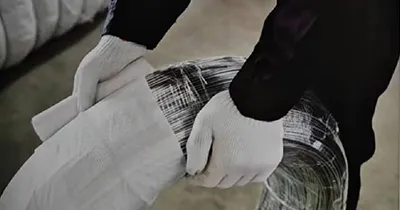-
 Phone:
Phone: -
 Email:
Email:

how to prevent rock falls
How to Prevent Rock Falls A Comprehensive Guide
Rock falls are a significant hazard that can occur in mountainous and rocky terrains, posing a threat to lives, infrastructure, and the environment. To mitigate these risks, it is crucial to implement effective preventive measures. This article outlines key strategies for preventing rock falls and ensuring safety in vulnerable areas.
1. Understanding the Risks
The first step in preventing rock falls is to understand the conditions that contribute to such events. Factors such as weather conditions, geological formations, and human activities can increase the likelihood of rock falls. Heavy rainfall, freeze-thaw cycles, and seismic activity can destabilize rock formations, while mining, construction, and road maintenance can exacerbate the problem. Conducting thorough geological assessments helps identify high-risk areas and informs preventive measures.
2. Regular Inspections and Monitoring
Regular inspections of rock faces, cliffs, and slopes are essential for identifying potential hazards. Using geotechnical tools and technologies, such as laser scanning and drone surveys, can help monitor changes in rock stability. These inspections should look for signs of rock movement, cracks, or vegetation changes that may indicate instability. By establishing a monitoring system, authorities can react promptly to any signs of impending rock falls.
3. Engineering Solutions
When it comes to prevention, engineering plays a crucial role
. Various techniques can be employed to stabilize slopes and reduce rock fall hazards, includinghow to prevent rock falls

- Rock Bolting This involves inserting steel rods into the rock to increase stability and prevent movement. - Mesh and Netting Installing wire mesh or netting on vulnerable slopes can catch falling rocks before they reach the ground. - Rock Retention Systems Structures designed to hold loose rock can effectively prevent displacement and control rock fall debris.
In some cases, it may be necessary to remove unstable rocks or vegetation that could contribute to rock falls.
4. Vegetation Management
Maintaining vegetation on slopes can be an effective preventive measure. Roots of plants help anchor soil and rock, reducing the likelihood of erosion and destabilization. Encouraging native vegetation growth and avoiding the removal of important plant life can enhance slope stability. However, it is essential to manage invasive species that may weaken the local ecosystem.
5. Public Awareness and Education
Raising public awareness about the risks of rock falls is vital. Providing education on safe practices for individuals who live or work in high-risk areas can minimize accidents. Clear signage, informational brochures, and community workshops can inform people about safety measures and emergency procedures in case of a rock fall.
Conclusion
Preventing rock falls requires a combination of understanding geological risks, regular monitoring, engineering interventions, vegetation management, and public education. By taking proactive steps, we can significantly reduce the dangers associated with rock falls, protect lives, and preserve our natural environments. Collaboration among geologists, engineers, and local communities is essential for developing comprehensive strategies to combat rock fall hazards effectively.
-
Wire Mesh for Every Need: A Practical SolutionNewsJul.25,2025
-
Steel Fences: Durable, Secure, and Stylish OptionsNewsJul.25,2025
-
Roll Top Fencing: A Smart Solution for Safety and SecurityNewsJul.25,2025
-
Cattle Farm Fencing Solutions for Maximum SecurityNewsJul.25,2025
-
Affordable Iron Binding Wire SolutionsNewsJul.25,2025
-
Affordable Galvanized Wire SolutionsNewsJul.25,2025
-
Wire Hanger Recycling IdeasNewsJul.25,2025








